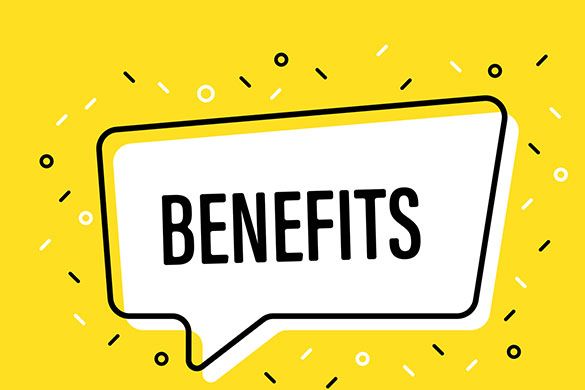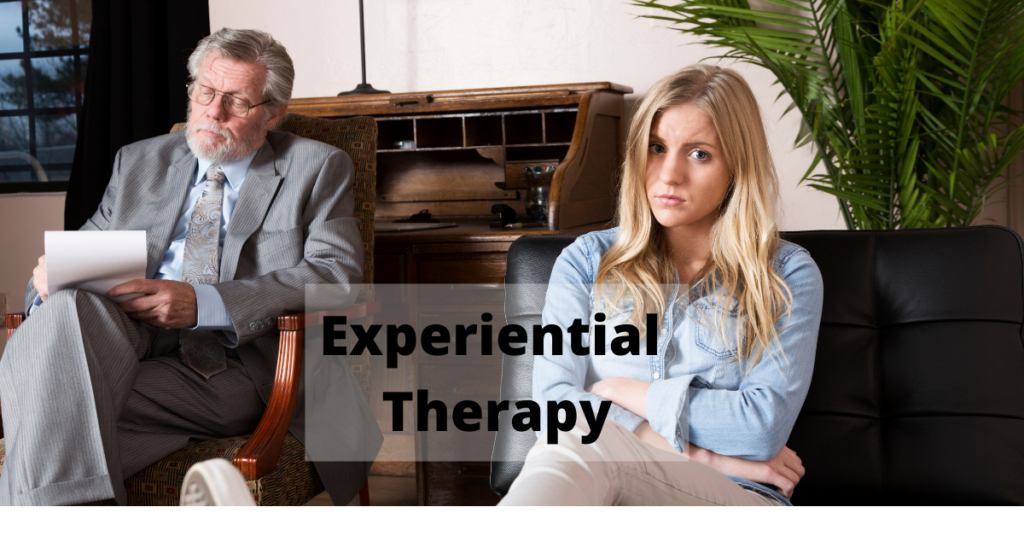Experiential therapy is a new and innovative way to deal with mental health issues. It focuses on the idea that we can heal from emotional distress by becoming more mindful of what our body feels, thinks, and does in different situations. This blog post will explore this approach to treatment. It also explains how it works with clients who are struggling with anxiety or depression.
Contents
What Is Experiential Therapy?
 Experiential therapy is a form of treatment that focuses on the experience of everyday life. This includes thoughts, feelings, and behaviors as well as memories, past experiences, relationships with others, physical environment, or spiritual beliefs. You all see through an experiential perspective. Experiencing new events in one’s own way can be very powerful.
Experiential therapy is a form of treatment that focuses on the experience of everyday life. This includes thoughts, feelings, and behaviors as well as memories, past experiences, relationships with others, physical environment, or spiritual beliefs. You all see through an experiential perspective. Experiencing new events in one’s own way can be very powerful.
This approach may seem simple in comparison with traditional talk therapy. This is where people typically discuss problems without focusing on solutions. It is until this therapy resolves all the problems. Even if this takes years. However, it doesn’t necessarily work better than more traditional forms of psychotherapy.
Techniques In Experiential Therapy
There are many techniques in experiential therapy, including:
In-Vivo Exposure

Getting people to face their fears in real-life situations where they have a chance of being successful. This includes going into feared or avoided environments and activities. It also involves confronting specific triggers that cause unpleasant responses such as anxiety, anger, depression, etc. The individual learns how to cope with these uncomfortable feelings while staying in the situation until it becomes less distressing over time. Seeing through different eyes is important here because sometimes what we fear isn’t so bad once you give it a second thought!
Imaginal Exposure
 Exposing someone to mental images related to trauma events which are often associated with negative emotions such as guilt or shame about certain memories they may be repressing. This technique can help the individual process these memories and eventually work through them.
Exposing someone to mental images related to trauma events which are often associated with negative emotions such as guilt or shame about certain memories they may be repressing. This technique can help the individual process these memories and eventually work through them.
Role-Play
Acting out different scenarios with a therapist or another person in a safe and supportive environment to explore new behaviors, solve problems, or experience different emotions.
Self-Expression

This could involve music, movement, art, drama, writing, or any other activity that allows for self-expression. It provides an outlet for feelings and thoughts which might not be easily accessible through words alone. The goal is to increase insight and understanding of oneself as well as others.
Sensation & Body Awareness
Focusing on sensations experienced in the body such as heat, cold, pain, pressure tingling, etc. This helps people become more aware of their physical and emotional experiences.
Goal of Experiential Therapy

The goal of experiential therapy is to help people gain insight into thoughts, feelings, and behaviors. It is through the experience of what they are like in everyday life. You can achieve this by experiencing different situations with a therapist or by using various techniques at home.
People who participate in this type of therapeutic approach often feel an increase in levels of self-acceptance, acceptance from others (including therapists), awareness about emotions experienced throughout their day-to-day lives, and better social interactions. This is because they have learned how to express themselves more effectively when it comes time for difficult conversations that may arise between friends or family members.
Most importantly though, individuals learn ways in which they can cope with these challenging experiences so that it does not have a negative impact on their day-to-day life.
Working of Experimental Therapy
There are many steps in working with experiential therapy.
Developing Relationship With Therapist
To get the most out of experiential therapy, it’s important to have a safe and trusting relationship with your therapist. This can be achieved through open communication which means being honest about how you feel in sessions as well as at home when completing exercises on your own.
Identifying Problem Areas & Setting Goals
In order for therapists to help their clients work towards overcoming difficulties, they must first determine what areas need attention or where problems are stemming from. For example, maybe someone is dealing with depression after losing a loved one due to death by suicide so working through these experiences will involve grieving while also learning healthy coping skills such as building up social networks and practicing positive self-talk (which we cover more below). Once goals are identified, specific techniques can help the individual work through them.
Selecting Techniques
This is where experiential therapy really shines. It is because this offers a wide range of activities and approaches. You can use these on the basis that what will be most beneficial for the client at that moment. Therapists are able to select from different activities such as role-play, self-expression, sensation & body awareness, and imagination exposure depending on what might be helpful in addressing the identified goals.
Implementing Exercises at Home
When therapists select exercises, they will often provide instructions on how to complete these tasks outside of the session. This could involve anything from writing about traumatic experiences or listening to music that evokes certain feelings to drawing a picture of how you’re feeling that day. The idea is to give people the tools they need. This is so that they can continue working on their own goals and progress even when not in session.
Benefits of Experiential Therapy

There are many benefits of experiential therapy. Some of the main benefits include:
Increases Self-Awareness & Growth in Emotional Intelligence
One way that experiential therapy helps people grow is by helping them become more aware and accepting of their own thoughts, feelings, and behaviors. This ultimately leads to better understanding others’ perspectives as well because we often automatically assume how other people might be feeling based on our experiences which may not always be accurate so it’s important to learn ways in which you can improve this ability.
Improves Communication Skills with Others
Experiential therapies allow individuals to work through difficult conversations they may have experienced throughout their lives such as breakups or major arguments with friends/family members. It also helps facilitate effectively expressing emotions like anger, sadness, or even happiness to others.
Enhances Coping Skills for Difficult Emotions & Situations
Experiential therapy allows people to work through challenging feelings and situations that they may not have been able to solve on their own in the past such as grief after losing a loved one or how to cope with depression. It also helps improve the overall quality of life. This is teaching healthy coping skills. You can use this when facing these types of challenges down the road.
Increases Sense of Self-Worth
People who undergo experiential therapy often report an increase in self-worth and a better sense of self. This comes from the realization that they’ve been able to overcome difficult challenges and tasks through hard work and determination which can be applied elsewhere in their lives.
Helps Address Mental Health Conditions
Lastly, one of the biggest benefits of experiential therapy is that it can help address various mental health conditions. This includes conditions like depression, anxiety, bipolar disorder, and PTSD. This also benefits people who do not have mental health condition but are experiencing symptoms.
Side-Effects of Experimental Therapy
There are some side-effects of experimental therapy as well. Some of which are:
Overwhelming At First
Some people find that the number of exercises and activities they are given to do can be a bit overwhelming at first. This is because it’s often a lot different from traditional talk therapy where you may only be meeting with your therapist once a week for an hour. With experiential therapy, you will likely be doing things outside of the session as well which can take some getting used to.
Difficulty In Emotions to Surface
Another potential side-effect is that sometimes when working through difficult emotions and experiences, these feelings may resurface again. This can be intense and uncomfortable. It’s also a sign that the therapy is working. That is why it’s important to try and stay present. You should allow yourself to fully experience these emotions.
Expensive & Time Consuming
Another potential side-effect is that experiential therapy can be expensive and time-consuming for people who may not have the resources they need. This includes access to transportation if you’re having someone come meet with you in your home or office. That isn’t always possible without a car depending on where you live. It also takes more sessions per week than traditional talk therapy because of all the activities involved so it can take longer until you start seeing progress which some people may find discouraging as well.
Loss of Privacy
Experiential therapy can also cause you to lose some privacy when attending sessions in person. This is because the therapist will likely be recording certain activities so they have a reference point for future conversations and exercises, which may not always feel comfortable depending on your preferences.
Is Experiential Therapy Effective?
The effectiveness of experiential therapy has been supported by research. There are positive effects in combating mental health conditions like depression and anxiety. However, there is a need for more research to understand the long-term benefits and side-effects of this approach. Some people find that the number of exercises and activities they are given to do can be a bit overwhelming at first, but it’s important to try and stay present and allow yourself to fully experience these emotions. It also takes longer until you start seeing progress which some people may find discouraging as well.
Conclusion
The idea of experiential therapy is that the patient should be engaged in a process, not just have their symptoms managed. This means that they are put into situations. This is where they will experience some kind of distress and then work through it. This is while being supported by clinicians who can help them find new ways to cope with these troubling emotions. A lot has been written about how this type of therapy could one day replace traditional talk-based psychotherapy altogether. This is because it’s so effective at helping people get over difficult feelings quickly. But what does all this mean for you? If you’re looking for an alternative form of mental health care, or if you know someone else who might benefit from something different than talk-based sessions, don’t hesitate to reach out.
If you are looking for affordable Online Counseling MantraCare can help: Book a trial therapy session


